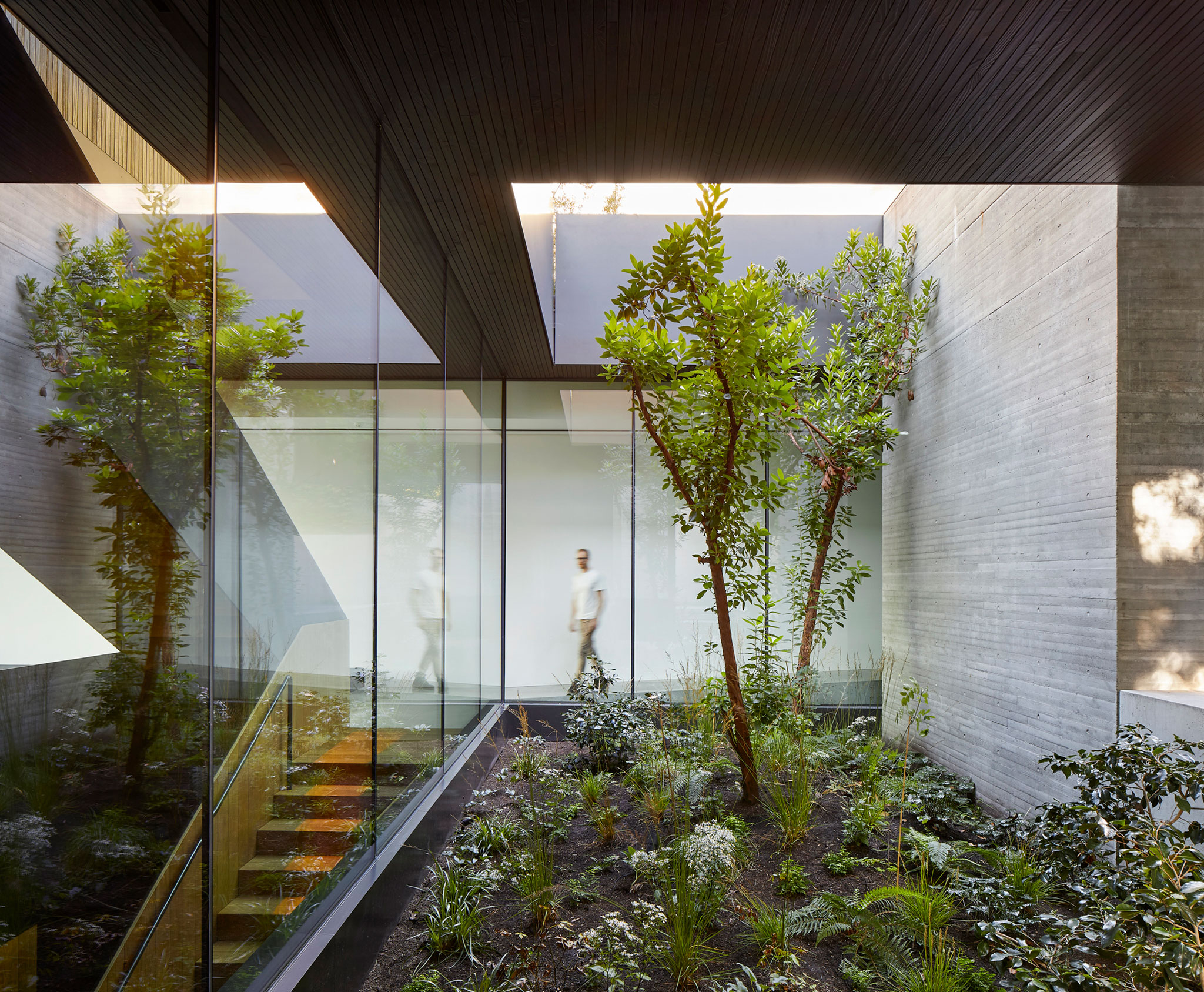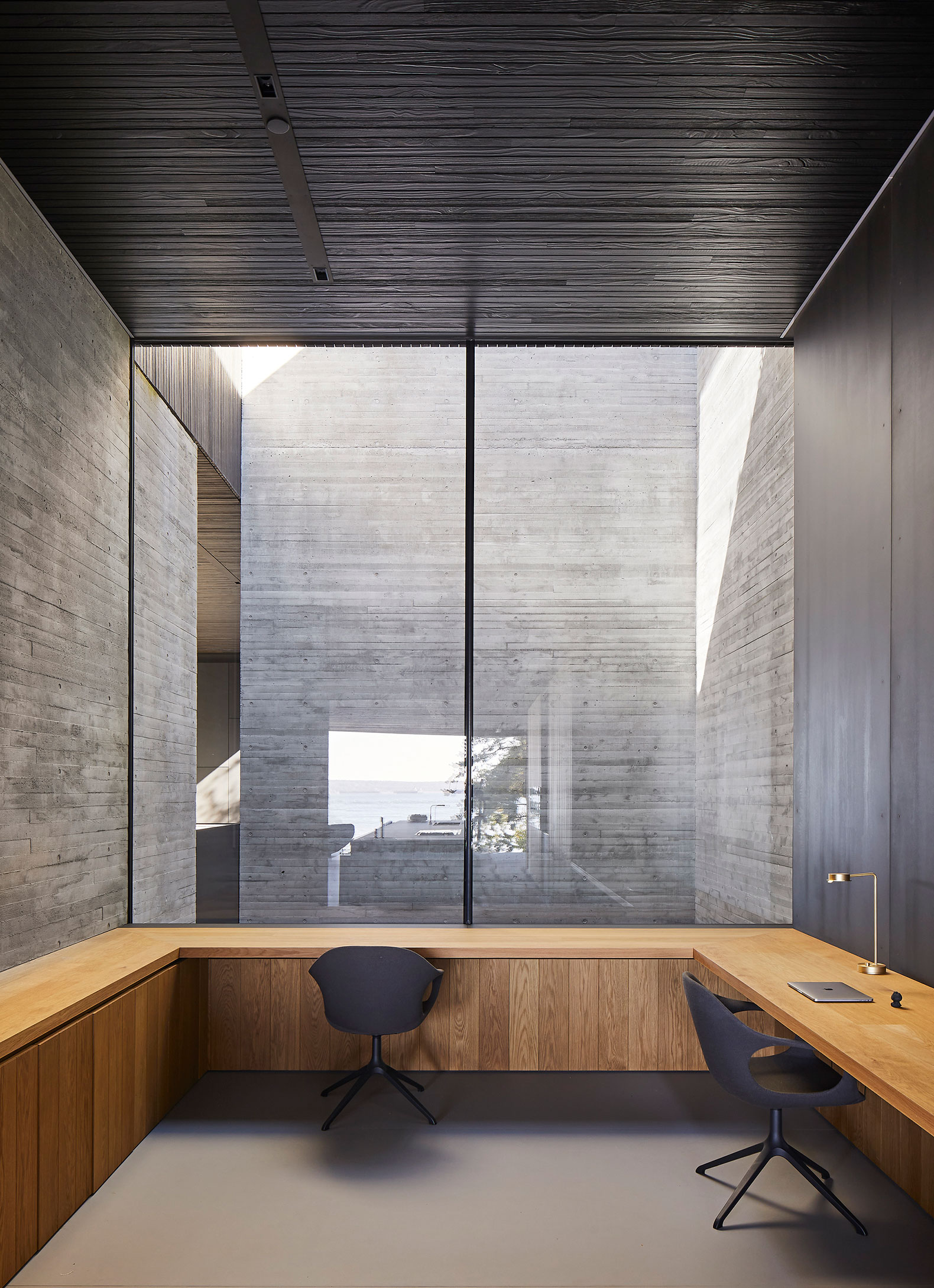The private areas have a wall of floor-to-ceiling glazing opening to a covered terrace and pool with a waterfall edge that disappears into the ocean.
The basement floor level has a light well and holds service and recreational spaces, with a second car park area, an office, a lounge space, a utility room, and a guest suite. On the south side of the floor plan, a covered terrace walks out to a spa and lower garden below the pool.
The house was built with concrete, black-stained accoya wood, and coated aluminum plate to define the exterior. The Liminal House of 1,016 square meters was completed in 2022.
 Liminal House by Mcleod Bovell Modern Houses. Photograph by Hufton+Crow.
Liminal House by Mcleod Bovell Modern Houses. Photograph by Hufton+Crow.
Liminal House by Mcleod Bovell Modern Houses. Photograph by Hufton+Crow.
Project description by McLeod Bovell
The clients came to us at a pivotal stage in their lives as soon-to-be empty nesters. The evolving needs of a family became the impetus for how we imagined a house that could embody the state of transition at a conceptual and experiential level. We chose the word liminal to encapsulate ideas that have informed the design process: namely the feeling of inhabiting a transitory place; orchestrating movement through space, and dwelling in the moments between from and to...
The project site straddles the interstice between a suburban residential neighborhood and West Vancouver’s natural stony seashore. Positioned on an expanded border between land and sea, the building form references the creatures that occupy this interstitial territory, whose physiology has adapted to such challenging conditions. In the same spirit, the house establishes itself in concrete, stained Accoya wood, and aluminum plate—enduring materials that can resist the battering effect of a shore environment.

Liminal House by Mcleod Bovell Modern Houses. Photograph by Hufton+Crow.
Drawing from our experience negotiating complex topography and tight proximity with neighbors, we have learned to abandon the reading of the project as a series of flat “elevations” that exist from an imaginary or inaccessible viewpoint. Instead, we embrace a scenographic approach where the house can be understood after having moved through and around it. The language of courtyards, cantilevered volumes, and extension of landscaped surfaces onto floor areas below dismantle boundaries between the house and the natural environment.
The changing outdoor atmosphere at the shore not only animates the house but is in turn animated by the house: views are framed between solid walls and walls of glass; their images are duplicated by a dark pool at the edge of the property and by the glazing of the internal courtyard. Reflections and refractions of the outdoors evoke a feeling of being neither here nor there, but somewhere in between.










































































